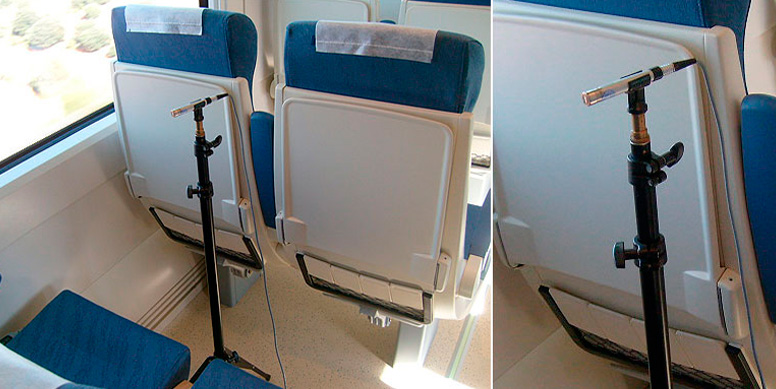- Home
- Innovation and technology
- Basic technologies
- Noise and vibrations

Noise and vibrations
In order to supply rail vehicles that are noted for their vibro-acoustic comfort, present-day CAF projects give priority to vibro-acoustic studies which come within the earliest project design stages and are conducted right up to the on-track test stage. The information obtained from the vibro-acoustic study is extremely useful for decision making during the design stage, decisions that can have a positive affect on the vibro-acoustic features of the vehicle.
This vibro-acoustic study comprises a series of stages:
1. Contacts with suppliers
- CAF R&D closely collaborates with the suppliers of the various items of equipment to be mounted on-board. This collaboration serves to define the characteristics (for example the acoustic power) required for the equipment in order to comply with the noise levels stipulated by the customer.
- On the other hand, CAF R&D also collaborates with the suppliers of the various acoustic solutions to be mounted on the vehicle: absorbent materials; insulating materials; elastic components, etc. All these form part of the system and it is absolutely essential to select the correct materials with the right characteristics in order to achieve maximum vibro-acoustic comfort.
2. SIMULATIONS
- It is often necessary to carry out an estimation prior to manufacturing the product in order to determine whether or not the steps being followed in the design phase will result in a vehicle that is compliant with the technical specifications imposed. Calculations/simulations are generally used to address this problem.
- This stage is generally conducted through close collaboration with various technology centres which, with the aid and supervision of CAF R&D, create predictive vibro-acoustic models. To do so, a number of calculation methods are used (FEM, SEA..).
In short, the objective is to get a general idea of the acoustic performance inside the train and to make constructive recommendations directed at minimising the expected acoustic levels.
3. TPA [Transfer Path Analysis]
TPA tests are performed at more advanced stages of the project. These serve to study the various vibro-acoustic transmission channels present on a rail vehicle. These tests:
- Firstly help to gain a better understanding of the vehicle.
- Secondly, help to identify the main sources of excitation in each of the sectors studied.
- Finally, they help to identify the main excitation channels in the vehicle interior.
Studies of this type make it possible to determine those sections of the vehicle requiring action in order to improve their vibro-acoustic performance.
